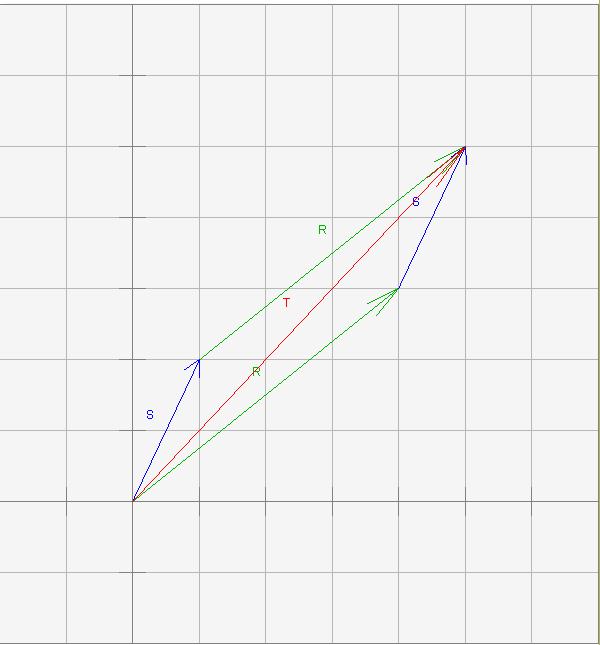As before,
T = (5, 5)T

There are two ways to form the sum:
T = S + R T = R + S
where
R = ( 4, 3 )T S = ( 1, 2 )T
There are two ways to draw the diagram, depending on which arrow's tail you put at the origin. If you draw both versions, then you get a parallelogram with the sum of the vectors as the diagonal arrow whose tail starts at the origin.
What is a parallelogram? you might ask, if your high school geometry is a bit murky. A parallelogram is a four sided figure with opposite sides parallel and equal in length. So, for example, the blue arrows representing the vector s are the same length and same direction. The green arrows representing the vector r have their same length and same direction.
u = ( -3, 2 )T, v = ( 1, -5 )T form the sum: w = u + v